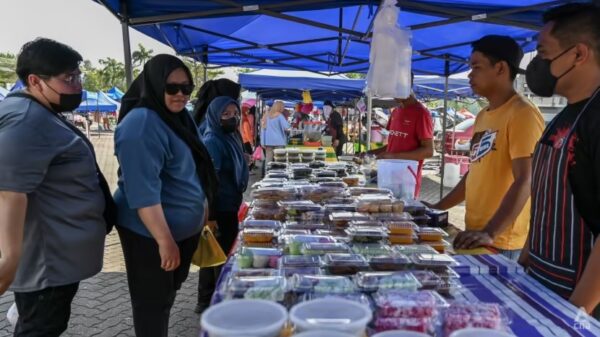
It is about one-and-a-half hours before the break of fast, and the Ramadan bazaar located next to the Shah Alam stadium in Selangor is a hive of activity.
Traders here are shouting at the top of their lungs to attract customers, many of whom have come at the end of the work day to buy food and drinks for their iftar.
Many traders told CNA that business has been particularly slow this year, especially during the weekdays. This is why they have resorted to calling out to prospective customers, the traders said, in order to attract them to their stalls.
Amid sluggish sales and rising costs, some have pivoted their offerings while others had to increase prices.
Ramadan bazaars are a common sight all over the country during the fasting month, offering a wide variety of food and drinks.
For many traders, setting up shop at these bazaars is a means of earning extra income before the festive season.
Ms Kuning Saidatul Izween, who operates the Mummy Ween stall at the bazaar next to the Shah Alam stadium, said that business has been relatively slow this year, and she had to pivot her business strategy in order to attract customers.
For the first eight days of Ramadan, Ms Kuning told CNA that she and her husband sold “nasi hujan panas”, which is also known as rainbow rice.
A pack of rice with meat and side dishes was sold for RM15 (US$3.40), she said, but demand was low.
“There is a lot of competition and many of the stalls selling rice were not doing well,” the 35-year-old said.

She also believed that people were spending less because the start of Ramadan came just several days after the reopening of schools, with parents having to spend on their children’s schooling needs first.
The full-time food trader then changed business strategy and started to sell food that was cooked on the spot, such as fried rice and fried noodles. Prices for these items started at RM7.
Ms Kuning told CNA that she had kept the prices of these dishes the same as the past two years, but has had to decrease the quantity of ingredients used.
This, she said, is due to the rising prices of raw ingredients.
“If last time there were three prawns on a plate of noodles, now I use two prawns. The prices of ingredients have increased but I want to maintain my selling price because of my customers,” said the mother of five.